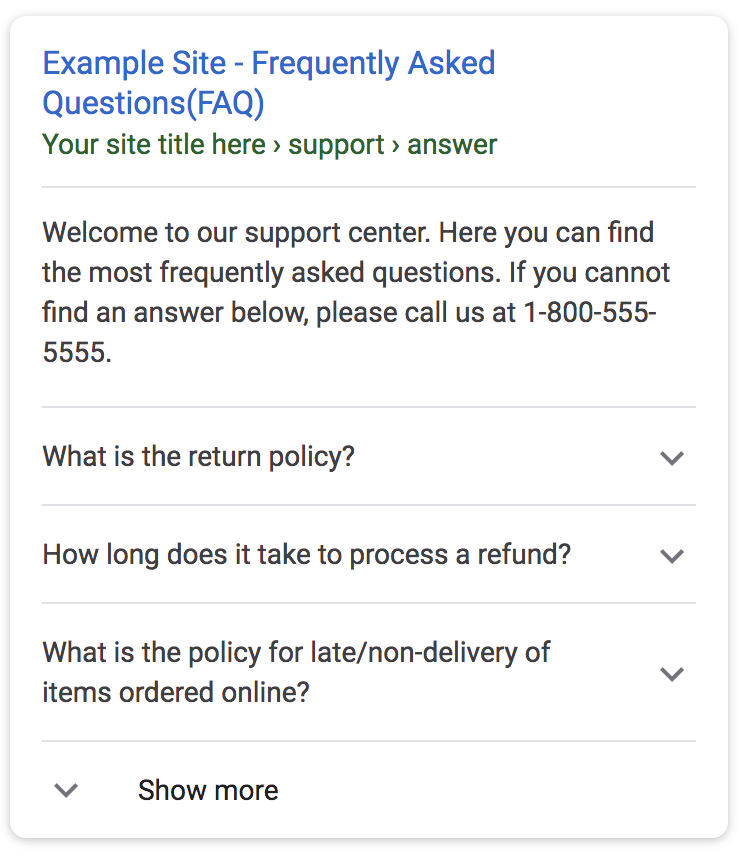I remember like today, when a few years ago I strongly encouraged (and still do) the implementation of structured data on sites and was met with a dismissive attitude of “tru positioners”: what’s the point, there’s no benefit from it, you’re giving away content to google and have nothing in return.
Today, I think few people still have any doubts about the benefits of structured machine translation, as our website tells us. However, if there are some here, let’s let them play with their SWLs in peace, and let’s deal with the hot topic of HowTo and FAQ Page structured data ourselves.
Spis treści
A quick reminder: what is structured data
Simply put, structured data is how you help Google (or other robots) understand what is on your website. It is a part of the so-called “new”. semantic web, a web that presents data in a way that machines can understand and process.
In practice, you label individual elements of your site with the appropriate code, explaining to Google robots what the element is.
So if you run an online bookstore and don’t have structured data, the book page is just a string of characters. By entering structured data, you can provide much more information to Google.
Example of structured data to be implemented on a bookstore product page
- book title
- Author
- publishing house
- year of publication
- cover
- description
- editor’s assessment
- editor’s review
- reader rating
- address details of the bookstore
- bookstore logo
- price
- postage
- edition
- and many others
The pluses of implementing structured data are, first and foremost, to stand out in search results (for example, through star ratings indicating the average rating of a product on our site).
Far more important, however, are the benefits we don’t see, which is better understanding of our site’s content by Google, and thus serving better results.
You can read more about structured data and its implementation here: structured data.
HowTo structural data

If a user on your site can find the answer to a question starting with the word “how…?”, then there’s a good chance that HowTo is right for you. Any manuals, tutorials, tips and tricks blogs, sticky e-commercials blogs with guides to the products they sell, can successfully benefit from this Google Search functionality.
The only limitation required by HowTo is that the instructions must be broken down into steps. This seems natural in the case of, for example, the question “How to launch a space shuttle,” where the step-by-step procedure is natural, but is no longer so obvious in the case of the question “How to find Jesus?”👼.
As an aside, I would like to add that Google tends to use manual works and instructions for performing physical, domestic, etc. activities, such as renovations, clothing, etc., as examples of HowTo implementations. But let’s not kid ourselves – this function will certainly be used (and abused) also for purely commercial guides, such as shopping guides.
Important HowTo links
- documentation by Google
- Schema.org documentation
- description of HowTo Action (more on that later)
What else is worth knowing about HowTo:
- for the moment (May 2019) it functions only in English, but there is no need to delay – PL support is only a matter of (short) time
- correctly implemented structured data HowTo can give us a rich snippet with a link to our site, as well as a ready action for Google Assistant
- the entire instruction as well as the individual steps can contain text, graphics and video
- violation of guidelines is the use of HowTo to promote advertising content🤑, dangerous, illegal, not actually visible on the site
- the instructions contained in the structured data must be the main topic of the subpage in question, i.e., nothing about putting HowTo on sales pages
- HowTo is not intended for recipes – that’s what we have Recipe structured data for
- HowTo rich snippets appear only on mobile📱 – on desktops💻 HowTo will not appear.
Structural Data FAQ Page

What is a FAQ – everyone more or less knows. This is a collection of the most common questions and answers to them. Structured data FAQ Page is a way to tag these questions and answers so that Google can present them directly in SERPs and Google Assistant.
The main use is for questions about our store or our services – questions about shipping costs, methods of cooperation, the location of the company, a question about the characteristics and use of our products, etc. In time, there will probably be some brave ones who decide to find slightly more spammy applications.
The most important thing here is that these are to be answers written by the site owner/webmaster, not by users. There can be only one answer for each question. Thus, in practice, it is a guide written by a webmaster, framed in the form of questions and answers.
Important FAQ Page Links
What else you should know about FAQ Page
- if your users can send in their answers to questions, or if you allow alternative answers, use QAPage instead of FAQ Page
- properly implemented FAQ Page can give you the benefit of rich snippet and Google Assistant Actions
- FAQ Page displayed by Google in all languages, both mobile and desktop versions
- the content must not be offensive or illegal and must be entirely visible on the site
Why are HowTo and FAQ Page so important for SEO?
I’m not going to convince the unconvinced any longer why it’s worth implementing structured data. But leaving aside all the advantages that come from a better understanding of the site by the search engine, here we get 2 important direct benefits with which it is impossible to argue.
Rich Snippet
Better than being in the No. 1 position on Google is only being in the No. 0 position, which is in rich snippet:

And even if you complain about the fact that some users will read the instructions directly in the SERP and not go to your site, some number of hits will still be gained. And if you don’t implement this solution then sooner or later your competitors will and you will be left with nothing.
Google Assistant action
At the moment, the Google Assistant in Polish is a simply abysmal tool. And at the same time, there is no doubt that it is a tool of the future. When there is an update to the Assistant, making it something that can be used, we will have the action ready and we will most simply understand each other with the Assistant.
Implementing HowTo or FAQ Page data creates a ready-made action that the Assistant can use at the user’s request, as in the example below with origami:

If you think it’s not worth…
How many times have such technological mini-revolutions proposed to decision-makers been dismissed with laughter and disregard. And implemented a year later anyway, after waking up with the proverbial finger in the night.
If you need help implementing these, or other structured data, or are generally not doing well with optimization and SEO efforts, feel free to contact me. I’m not promising pears on willows, but we’ll see what we can do.









